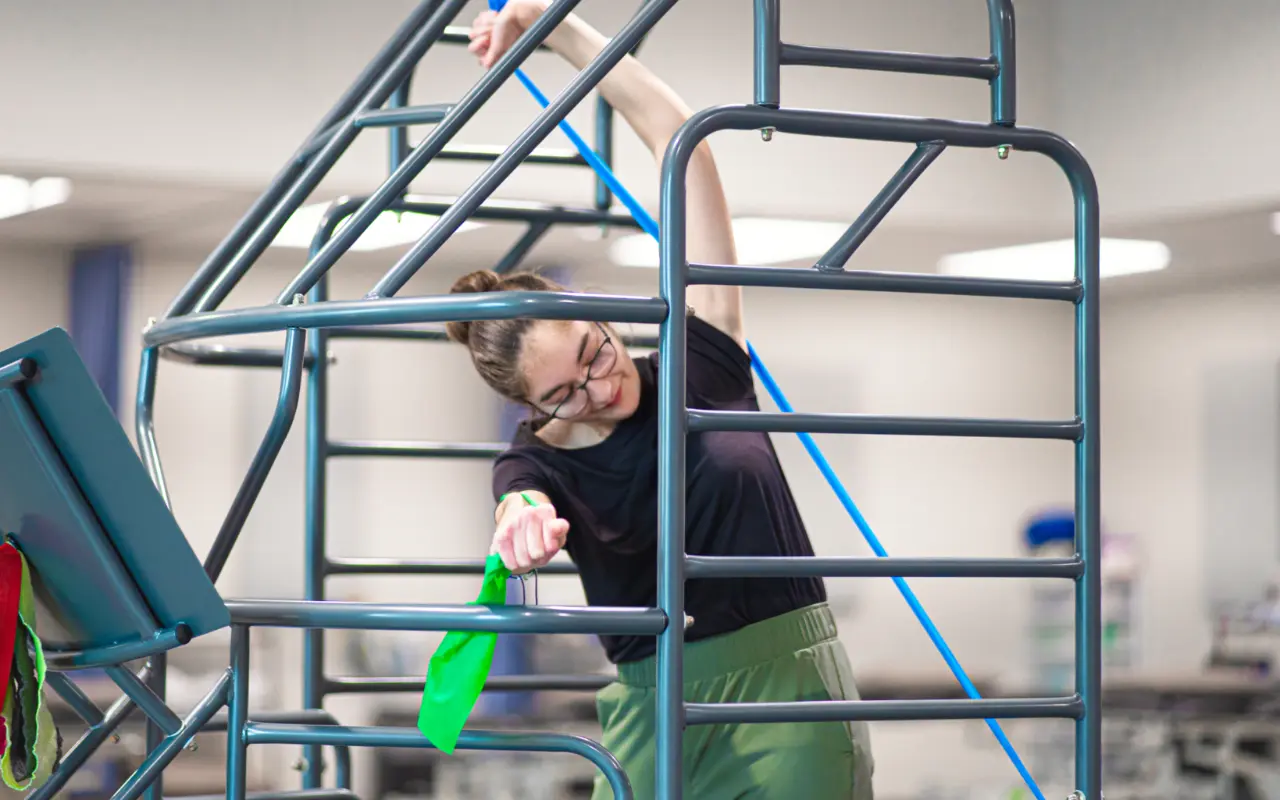Scoliosis is a disease that affects 2-3% of the American population. Many early adolescents are diagnosed every year, and this can be scary for them – especially if they are only presented with surgery to treat it first.
In recognition of Scoliosis Awareness Month, we talked to Taylor, who has been treated by John Kline, PT, DPT, CSCS, FAFS, for her scoliosis, about her diagnosis experience and how physical therapy has helped her move and feel better:
When were you diagnosed with scoliosis?
I was diagnosed in March of 2018. At this point, I was 13 years old. I was, of course, very shocked and surprised. However, my mom and sister have this disease as well, so I knew that it was a possibility for me.
What type of scoliosis do you have and what were your immediate options for treatment?
I have an S curve, meaning I have a curve in my thoracic spine and a curve in my lumbar spine. When I was first diagnosed, my thoracic curve was 40 degrees, and my lumbar curve was 63 degrees. This is considered severe enough that my doctor immediately recommended fusion surgery. They said it was the only way to fix it.
But, I didn’t want surgery, and my parents didn’t want surgery. Of course, we went online to research options. There were success stories of fusion surgery, but there were also stories of people whose rods snapped, which required them to get the surgery all over again. There seemed to be a really big risk involved with it, and we weren’t willing to take those risks.
Tim Spooner recommended that we try it out because there was a case of a Spooner physical therapist, Andrew Walquist, who treated his own scoliosis through physical therapy. John Kline, PT, DPT, CSCS, FAFS, studied under him, so we went to John.
How has physical therapy helped you?
In physical therapy, we work a lot on positioning and strength to work into my curve. It has helped me a lot, but, the one thing I have learned is that you cannot fix scoliosis within a few weeks. You have to be consistent with physical therapy over a period of years.
The more consistent I am with my exercises, my curve improves. There was one year where the images showed that the progression of my curve stopped completely, and the next, there was actual improvement.
What are your goals going forward?
I am continuing to work to straighten out my spine to avoid any complications in the future. There are horror stories out there about untreated scoliosis – things like early organ failure – and I want to avoid that.
I also want to be in a position in which I can help people. I am currently studying to be a nurse, so I want to be strong enough and in the right position so I can optimally care for others.
If you have scoliosis or know someone who just recently was diagnosed, schedule an appointment with a Spooner therapist today.

